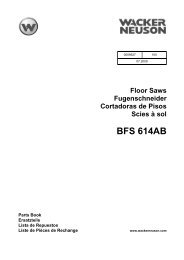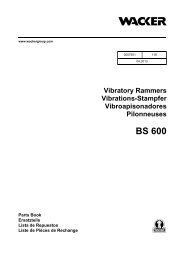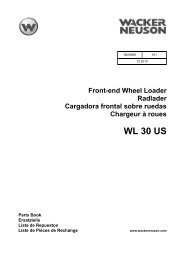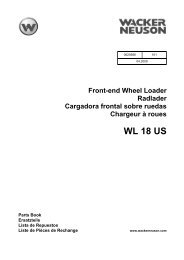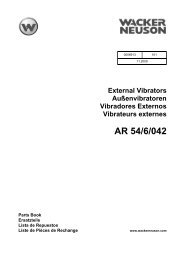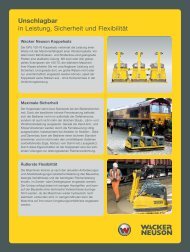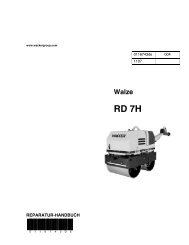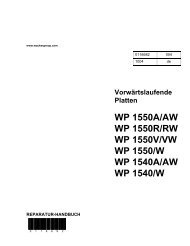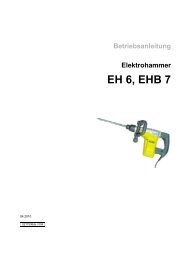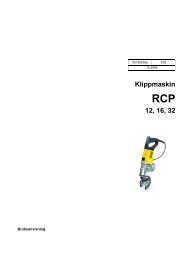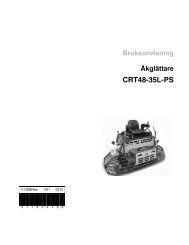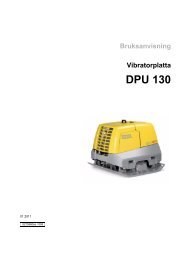Create successful ePaper yourself
Turn your PDF publications into a flip-book with our unique Google optimized e-Paper software.
2 OPERATION PT / PG / PD REPAIR<br />
2.1 Factors Affecting Pump<br />
Performance<br />
Certain conditions outside the pump will influence the<br />
pump's output and ability to lift water. These factors can<br />
be critical if the pump is operating near its maximum<br />
limits.<br />
Before servicing a pump, review the current application<br />
and conditions under which it is operating.<br />
Suction Lift<br />
As the height of the pump above the water increases,<br />
pump output decreases. Always locate the pump as<br />
close to the water as possible. See Section 1.15 Performance<br />
Curves<br />
Total Head / Discharge Head<br />
Discharge head is the height of the discharge hose above<br />
the pump.<br />
Total head is a measure of the vertical distance the pump<br />
must lift water.<br />
TOTAL HEAD = Suction Lift + Discharge Head + Frictional<br />
losses.<br />
Pump output decreases as the discharge head or total<br />
head increases. See Section 1.15 Performance Curves<br />
Altitude<br />
Atmospheric pressure varies above or below sea level.<br />
At altitudes above sea level the maximum practical<br />
suction lift is reduced. See Section 2.2 High Altitude<br />
Operation.<br />
Frictional Loss<br />
The friction created by the liquid as it flows through a<br />
hose, pipe, strainer or fitting creates a resistance that the<br />
pump must overcome. These losses increase with the<br />
length of the hose, number of fittings and amount of water<br />
(GPM) flow. Frictional losses occur in both suction and<br />
discharge lines. In long hoses, these losses will accumulate<br />
to reduce pump output.<br />
Suspended Soils<br />
Suspended soils, such as sand or dirt, may add to the<br />
weight of the water, reducing the maximum practical<br />
suction lift. This condition would most often be observed<br />
in diaphragm type pumps operating at high lifts and<br />
pumping heavy sludges and mud mixtures.<br />
2-2<br />
Water Temperature<br />
As water temperature increases above 65°F (180°C) the<br />
maximum practical suction lift will decrease. For most<br />
normal operating temperatures pump performance is not<br />
greatly affected.<br />
However, certain conditions may arise where water<br />
temperature could be a factor. Allowing the prime water<br />
to sit in the pump housing on a warm day could raise the<br />
water temperature inside the pump case to the point<br />
where the pump is unable to create sufficient vacuum to<br />
pull the water up to it when started. Replace the water in<br />
the pump case with fresh cold water.<br />
While performing a SUCTION TEST the water may heat<br />
up sufficiently to give a faulty gauge reading. Complete<br />
testing within 3–4 minutes or stop engine and refill pump<br />
case with cold water. If possible, run continuous stream<br />
of cold water into pump case during testing.



